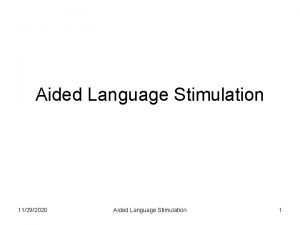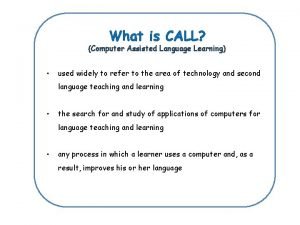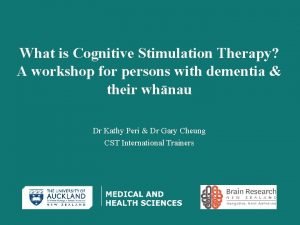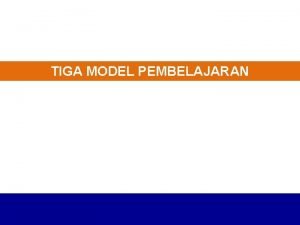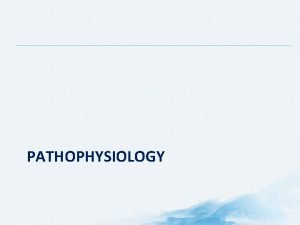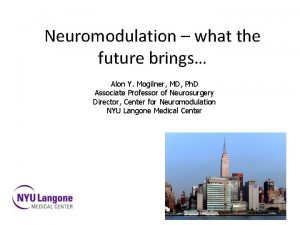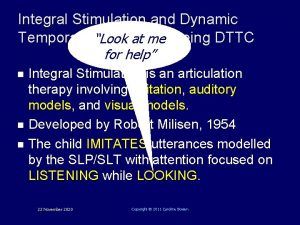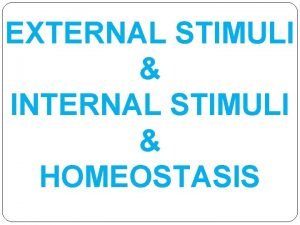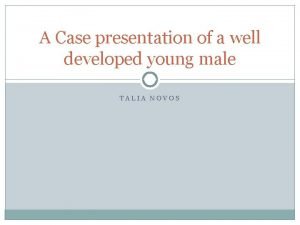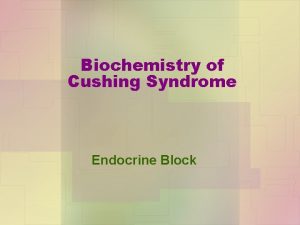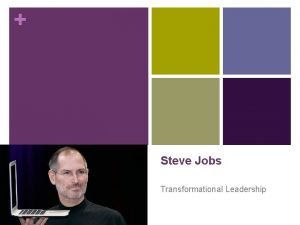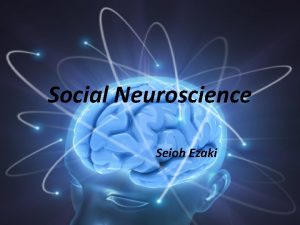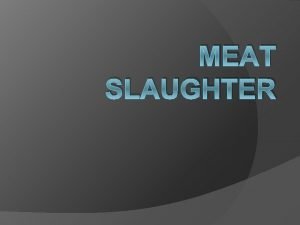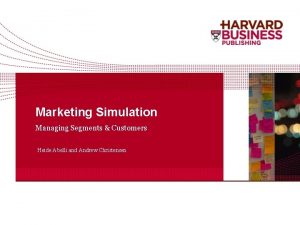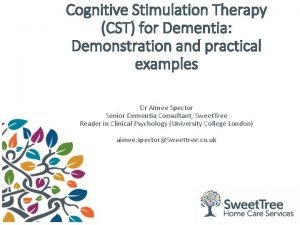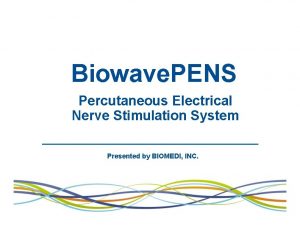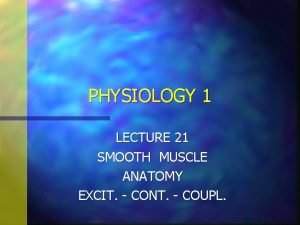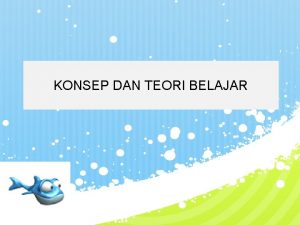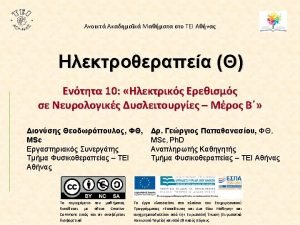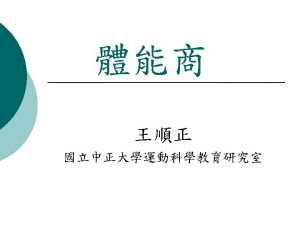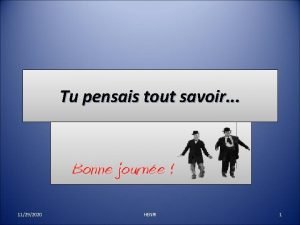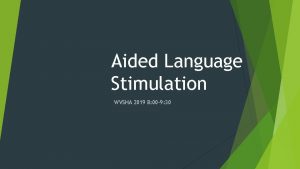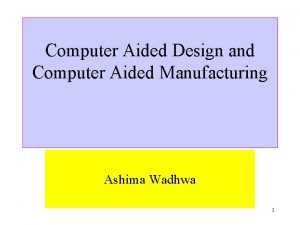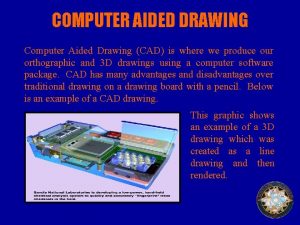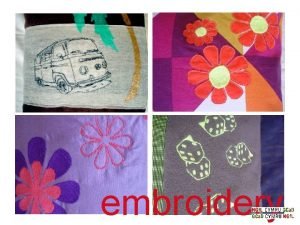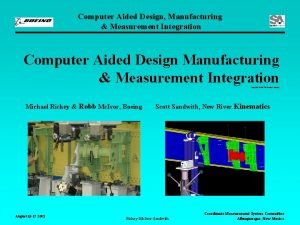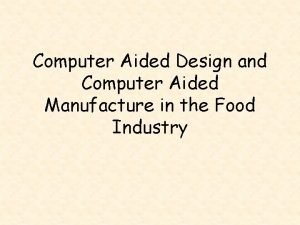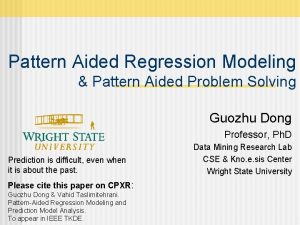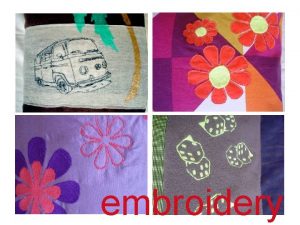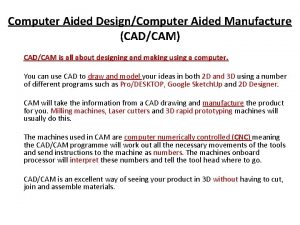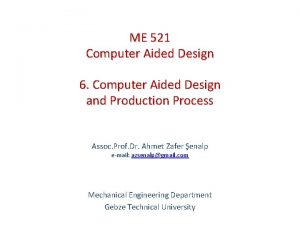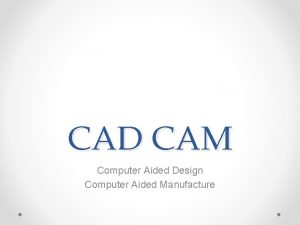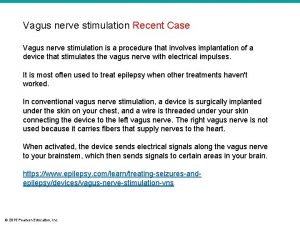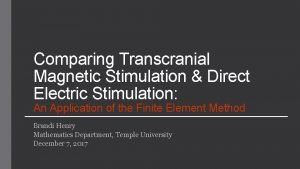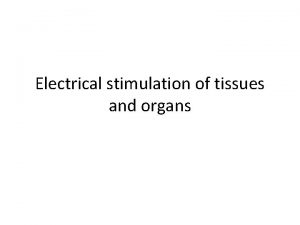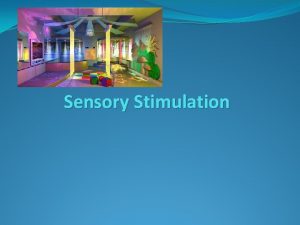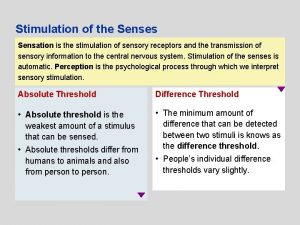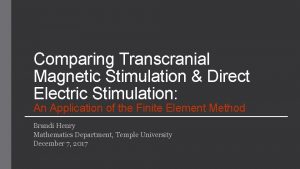Aided Language Stimulation 11292020 Aided Language Stimulation 1





















- Slides: 21

Aided Language Stimulation 11/29/2020 Aided Language Stimulation 1

Typical AAC Use & Patterns • • Respondent Role Provide information requested by facilitator Restricted range of communicative functions Asymmetrical patterns of turn taking, initiation and conversational control • Use of closed-ended questions and specific Whquestions by speaking partners • Tendency to communicate predominantly with adults in classroom setting, • 18. 2% of turns (communication board mode), 82. 8% of turns conveyed by vocalization, eye-pointing, facial expression (Light, Collier & Parnes, 1985) 11/29/2020 Aided Language Stimulation 2

Goal of AAC Use • AAC being used frequently, interactively, and generatively to express a wide range of communicative intents 11/29/2020 Aided Language Stimulation 3

Typical Use Reflective of Poor AAC Designs • Vocabulary is reflective of a diluted, as opposed to concentrated message pool 11/29/2020 Aided Language Stimulation 4

Aided Language Stimulation is a training strategy that attempts to address the dilemma of the typical AAC user • Facilitators must user’s systems to communicate with the user • Multiple activity based concentrated message set is recommended 11/29/2020 Aided Language Stimulation 5

Multiactivity Board Design based on: • Classroon needs • Classroom needs determine the content of individual systems 11/29/2020 Aided Language Stimulation 6

ALS • Symbol gloss (what the symbol represents), e. g. , “We’ve got OPEN (symbol) the box and PUT it IN (Symbol) the BOWL (symbol). selection is accompanied by spoken • Considerable preplanning necessary to ensure that the communication displays required for target activity are readily accessible to facilitators for providing ALS 11/29/2020 Aided Language Stimulation 7

Initial Phase of ALS • Comprehension training in meaning context • Lengthy period of exposure necessary before user comes to understand, then produce language • After sufficient period of ALS, many users demonstrate spontaneous expression communications 11/29/2020 Aided Language Stimulation 8

Total Immersion 11/29/2020 Aided Language Stimulation 9

Overlay Recommendation 11/29/2020 Aided Language Stimulation 10

With others, explicit training required • Basic Training Techniques – Non-verbal juncture cues – Shadow light cue 11/29/2020 Aided Language Stimulation 11

Non-Verbal Juncture Cues • Nonverbal signal precedes the highlighting of a symbol on communication display – facial expression – gestures – body posture 11/29/2020 Aided Language Stimulation 12

Non-Verbal Juncture Cues • “Sets the stage” for communication • Instead of excessive questions or commands to respond – Food preparation activity • Posing Direct Questions – What do we need – What do we have to do 11/29/2020 Aided Language Stimulation 13

Functions of Nonverbal Juncture Cues • code the essence of target symbol in a more basic form (easier to understand) • “drum rolls” target symbol allowing child to anticipate its selection by facilitator • impose a delay (familiar routines) to cue user to spontaneously select target symbols 11/29/2020 Aided Language Stimulation 14

“Bubbles” 11/29/2020 Aided Language Stimulation 15

Shadow Light Cues • Modeling Procedure • Facilitator assumes responsibility for – Recognizing when a communication opportunity exists – Determining what message is appropriate given the linguistic and non-linguistic context – Light cuer does not speak during this process – Light cuer’s role is not to serve as an interpreter 11/29/2020 Aided Language Stimulation 16

Hierarchy of Cues • • • Contextual cue (Nonverbal Juncture) Indirect verbal cue Search Light cue Direct verbal cue Momentary/flashing light cue 11/29/2020 Aided Language Stimulation 17

Hierarchy of Cues 11/29/2020 Aided Language Stimulation 18

Hierarchy of Cues Example 11/29/2020 Aided Language Stimulation 19

Sabotage Strategy Chart 11/29/2020 Aided Language Stimulation 20

ALS Text 11/29/2020 Aided Language Stimulation 21
 Language
Language What is computer assisted language learning
What is computer assisted language learning Cognitive stimulation therapy training
Cognitive stimulation therapy training Stimulation dalam pembelajaran
Stimulation dalam pembelajaran Nociception
Nociception Mogilner implants
Mogilner implants Integral stimulation
Integral stimulation What is external and internal stimuli
What is external and internal stimuli Cortisol stimulation test results
Cortisol stimulation test results Crh stimulation test interpretation
Crh stimulation test interpretation Adrenal gland regions
Adrenal gland regions Is steve jobs a transformational leader
Is steve jobs a transformational leader Seioh
Seioh Shrouding in slaughtering
Shrouding in slaughtering Marketing stimulation managing segments and customers
Marketing stimulation managing segments and customers Cognitive stimulation therapy training course
Cognitive stimulation therapy training course Biowave pens
Biowave pens Besoins cognitifs
Besoins cognitifs Muscle stimulation
Muscle stimulation Sensory stimulation theory
Sensory stimulation theory Ems brain stimulation
Ems brain stimulation Slidetodoc.com
Slidetodoc.com
